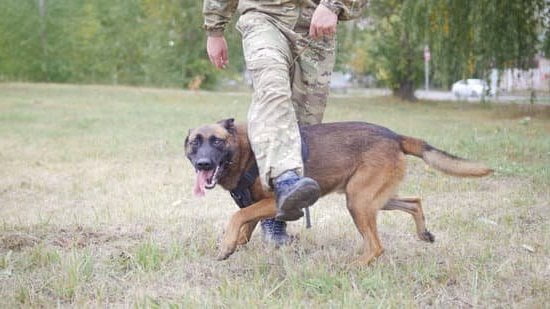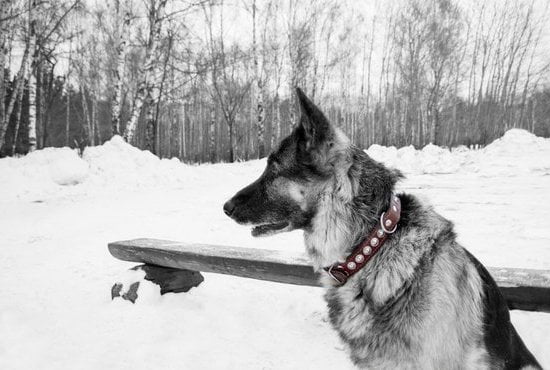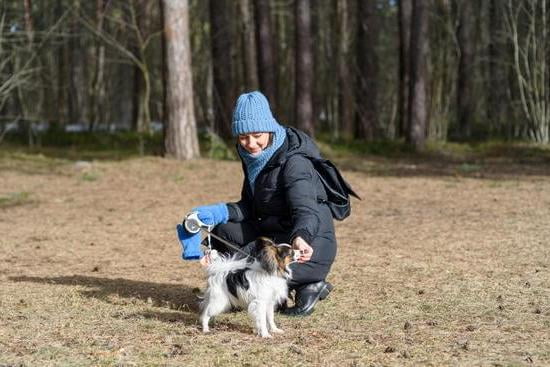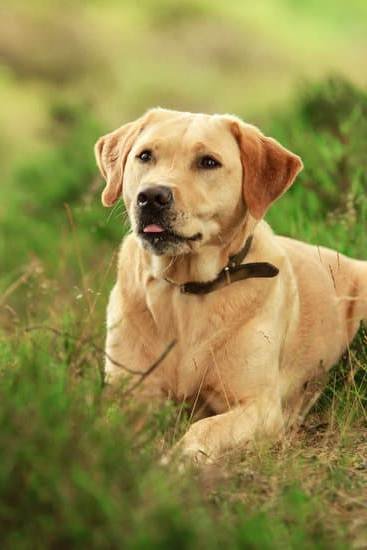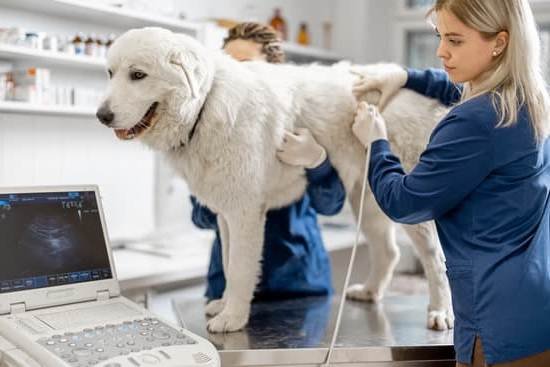Are you wondering how to train a rescue dog with separation anxiety? Many dogs adopted from shelters or rescue organizations struggle with separation anxiety, making it challenging for them to cope when left alone. In this article, we will explore the best strategies and techniques for training a rescue dog with separation anxiety, helping you build a happy and secure future for your furry companion.
Understanding separation anxiety in rescue dogs is the first step toward effective training. By recognizing the signs and triggers of separation anxiety, you can create a tailored approach to help your dog feel more comfortable and confident when apart from you. Assessing your dog’s specific needs and understanding the underlying causes of their anxiety will set the foundation for successful training.
Building trust and bonding with your rescue dog is crucial in addressing their separation anxiety. Creating a safe and comfortable environment for your dog, establishing a routine, and using positive reinforcement techniques are all integral parts of the process. Additionally, gradual desensitization and seeking professional help when necessary are key components of an effective training plan. Join us as we explore these topics in-depth to help you navigate the journey of training a rescue dog with separation anxiety.
Assessing Your Rescue Dog’s Separation Anxiety
Common Signs of Separation Anxiety
When assessing your rescue dog for separation anxiety, it’s important to be able to recognize the signs. Common signs of separation anxiety in dogs include excessive barking or howling when left alone, destructive behavior such as chewing or digging, pacing, attempting to escape, and having accidents indoors despite being house-trained.
It’s crucial to remember that these behaviors may also indicate other issues such as boredom or lack of exercise, so observation and understanding your dog’s behavior is key.
Triggers for Separation Anxiety
Understanding the triggers for your rescue dog’s separation anxiety can help you address the root cause of the problem. Some common triggers include sudden changes in routine, previous traumatic experiences such as abandonment or abuse, and being moved from one home or shelter to another. Identifying these triggers can provide valuable insight into your dog’s behavior and how best to support them through their anxiety.
Professional Evaluation
If you are unsure whether your rescue dog is suffering from separation anxiety or if there are underlying issues contributing to their behavior, it may be beneficial to seek a professional evaluation. A veterinarian or animal behaviorist can help assess your dog’s symptoms and provide recommendations on how to effectively manage their separation anxiety.
This evaluation may involve a thorough examination of your dog’s history and behavior patterns, in addition to discussing any potential medical causes for their distress. Seeking professional help can ensure that you are equipped with the knowledge and tools needed to support your rescue dog through their anxiety.
Building Trust and Bonding With Your Rescue Dog
When you bring a rescue dog with separation anxiety into your home, building trust and developing a strong bond is crucial in helping them feel safe and secure. Here are some essential tips for creating a strong connection with your new furry friend:
- Spend quality time: Dedicate regular, one-on-one time with your rescue dog to build trust and strengthen your bond. Engage in activities they enjoy, such as playing with toys, going for walks, or simply cuddling on the couch.
- Use positive reinforcement: Show your rescue dog love and affection through positive reinforcement techniques. Reward good behavior with praise, treats, and plenty of pets to reinforce the bond between you.
- Be patient and understanding: Understand that it may take time for your rescue dog to fully trust you. Be patient, gentle, and consistent in your interactions to help them feel secure in their new environment.
By focusing on building trust and bonding with your rescue dog, you can create a nurturing and supportive relationship that will help them overcome separation anxiety and thrive in their new home.
Establishing a Safe and Comfortable Environment for Your Dog
Rescue dogs with separation anxiety often feel distressed when left alone because they may have had negative experiences in the past. Creating a safe and comfortable environment for your rescue dog is crucial in helping them feel secure when you are not around. Here are some steps you can take to establish a safe and comfortable environment for your dog:
- Provide a designated “safe space” for your dog, such as a crate or a specific area in the house where they can retreat to when feeling anxious.
- Use comforting items such as blankets, toys, or clothing with your scent to help your dog feel more relaxed and secure.
- Consider using pheromone diffusers or calming aids to create a soothing atmosphere within your home.
Ensuring that your rescue dog has a safe and comfortable environment will help alleviate their separation anxiety and provide them with the peace of mind they need when you are away.
Remember that every dog is unique, so it’s important to observe your rescue dog’s behavior and make adjustments accordingly to create the most comfortable environment possible.
Creating a Routine and Structure for Your Dog’s Day
Once you have assessed your rescue dog’s separation anxiety and built trust and bonding with them, it is important to establish a routine and structure for their day. Dogs, especially those with separation anxiety, thrive on predictability and consistency. By creating a daily schedule for your rescue dog, you can help reduce their stress and anxiety, knowing what to expect throughout the day.
Start by setting specific times for feeding, walking, playtime, training sessions, and rest. This will not only provide your dog with a sense of security but also help in managing their behavior.
Be mindful of the activities that trigger anxiety in your dog and try to incorporate calming exercises or routines during those times. For example, if your dog becomes anxious when you are about to leave the house, plan a calming activity such as a puzzle toy or interactive game before you go.
It is essential to remember that while routine and structure are beneficial for dogs with separation anxiety, flexibility is also key. Being open to adjusting the schedule based on your dog’s needs or any progress they make is crucial for their overall well-being.
| Activity | Schedule |
|---|---|
| Feeding Time | 7:00 AM & 5:00 PM |
| Walking | 8:00 AM & 6:00 PM |
| Playtime/Training Sessions | 9:30 AM & 4:00 PM |
| Rest Time/Calming Activity | 10:30 AM & 3:00 PM |
Gradual Desensitization
Separation anxiety can be a common issue among rescue dogs, often stemming from their past experiences of abandonment or neglect. Gradual desensitization is a training technique that can help your rescue dog learn to be comfortable and secure when left alone. This method involves slowly acclimating your dog to being separated from you, helping them build confidence and independence over time.
Understanding Gradual Desensitization
Gradual desensitization involves exposing your rescue dog to brief periods of separation in a controlled and structured manner. This can help them learn that being alone is not something to fear, and that you will always return. The key is to start with short separations and gradually increase the duration as your dog becomes more at ease with the process.
Implementing Gradual Desensitization Techniques
Begin by leaving your dog alone for just a few minutes at a time, then returning before any signs of distress or anxiety are shown. Slowly increase the length of time you are away, making sure to praise and reward your dog when they remain calm. It’s important to keep these sessions positive and avoid making a big fuss when leaving or returning, as this can inadvertently reinforce any anxious behavior.
Being Patient and Consistent
Patience and consistency are crucial when using gradual desensitization to train a rescue dog with separation anxiety. It may take some time for your dog to become comfortable with being alone, so it’s important not to rush the process. By slowly building up their tolerance for alone time in a positive way, you can help your rescue dog develop greater confidence and security when left on their own.
Positive Reinforcement Training Techniques for Managing Separation Anxiety
Positive reinforcement training involves rewarding your rescue dog for desired behaviors in order to manage their separation anxiety. This technique focuses on promoting the behavior you want to see from your dog rather than punishing the undesirable behavior. For example, when your rescue dog remains calm and composed while being left alone, you can reward them with treats, praise, or playtime. This helps to create a positive association with being alone and reduces their anxiety.
Another effective positive reinforcement technique is to use interactive toys or food puzzles to provide mental stimulation for your rescue dog when they are left alone. By keeping them engaged and focused on an enjoyable activity, it can help distract them from feeling anxious about being separated from you. It’s important to gradually introduce these toys and puzzles to your dog so that they associate being alone with something positive and engaging.
Consistency is key when using positive reinforcement training techniques for managing separation anxiety in rescue dogs. It’s essential to reinforce desired behaviors every time they occur and avoid inadvertently rewarding anxious behavior. By consistently rewarding calm and relaxed behavior while being alone, your rescue dog will learn that remaining composed results in positive outcomes.
| Positive Reinforcement Training Techniques | Benefits |
|---|---|
| Rewarding with treats, praise, or playtime | Creates a positive association with being alone |
| Using interactive toys or food puzzles | Provides mental stimulation and distraction from anxiety |
| Consistency in reinforcing desired behaviors | Helps the rescue dog learn that calm behavior results in positive outcomes. |
Seeking Professional Help
There are certain signs and behaviors that indicate it may be time to seek the help of a professional trainer or behaviorist. If your dog exhibits extreme distress when left alone, engages in destructive behavior when separated from you, or shows signs of chronic stress or anxiety, it may be time to consult a professional.
Additionally, if your efforts to train and desensitize your dog to being alone have not resulted in any improvement over an extended period, seeking professional help could be beneficial.
A qualified trainer or behaviorist will be able to assess your dog’s specific needs and create a customized training plan tailored to their individual separation anxiety triggers. They can provide guidance on behavior modification techniques, recommend appropriate medications (if necessary), and work with you to address any underlying issues contributing to your dog’s separation anxiety.
Seeking professional help is not a sign of failure as a pet owner, but rather a proactive step towards providing your rescue dog with the support they need to live a happy and fulfilling life.
Celebrating Progress
One of the most rewarding aspects of training a rescue dog with separation anxiety is celebrating their progress and recognizing their improved behavior. It’s important to acknowledge the small steps and milestones that your dog achieves on their journey to overcoming separation anxiety. By celebrating progress, you not only motivate your dog to continue improving but also strengthen the bond between you and your furry friend.
When your rescue dog displays positive behavior, such as being calm when left alone or showing signs of reduced anxiety, it’s important to provide verbal praise and physical affection. Dogs thrive on positive reinforcement, and by acknowledging their progress, you are reinforcing the desired behavior.
Celebrating progress can include giving treats, engaging in playtime, or simply offering words of encouragement. These simple acts go a long way in showing your dog that they are doing well and that you appreciate their efforts.
In addition to recognizing and rewarding individual instances of improved behavior, it’s also beneficial to set specific goals for your dog’s training journey. Whether it’s increasing the duration of time they can be left alone without experiencing anxiety or reducing destructive behaviors associated with separation anxiety, celebrating these achievements can help keep you motivated as a pet parent.
By setting realistic goals and celebrating each milestone along the way, you can create a positive training environment for your rescue dog with separation anxiety.
Conclusion
In conclusion, training a rescue dog with separation anxiety is not an easy task, but it is definitely achievable with patience, consistency, and love. By understanding the signs and triggers of separation anxiety in your dog, you can take the necessary steps to build trust and a strong bond with your furry friend. Creating a safe and comfortable environment, establishing a routine, and using positive reinforcement techniques are all crucial in helping your dog manage their anxiety.
It’s important to remember that progress may be slow at times, but celebrating even the smallest improvements in your dog’s behavior is essential. Recognizing and rewarding these positive changes will encourage your rescue dog to continue on the path towards feeling more secure when left alone. Whether it’s seeking professional help from a trainer or behaviorist or learning effective desensitization techniques, there are resources available to support both you and your pet through this process.
Ultimately, by following these steps and showing your rescue dog the love and care they deserve, you can help them build a happy and secure future. With time and dedication, you will be able to witness the transformation of your rescue dog into a confident and content companion who feels safe even when separated from their beloved owner.
Frequently Asked Questions
Will Rescue Dog Grow Out of Separation Anxiety?
It is possible for a rescue dog to grow out of separation anxiety, but it may take time and patience. Many rescue dogs have experienced trauma or instability in their past, which can contribute to separation anxiety. With proper training, behavior modification, and a stable, loving environment, many dogs can learn to cope with being alone over time.
Can Separation Anxiety in Dogs Be Trained?
Yes, separation anxiety in dogs can be trained with the help of a professional dog trainer or behaviorist. Training typically involves desensitization and counter-conditioning techniques to help the dog feel more comfortable being alone.
This may include gradually increasing the time the dog is left alone, providing them with activities or toys to keep them occupied, and creating positive associations with being alone.
How Long Does It Take a Dog to Get Over Separation Anxiety?
The length of time it takes for a dog to get over separation anxiety varies depending on the individual dog and the severity of their anxiety. Some dogs may show improvement within a few weeks of consistent training and behavior modification, while others may take several months or longer to overcome their separation anxiety.
Patience, persistence, and positive reinforcement are key components in helping a dog work through their separation anxiety.

Welcome to the blog! I am a professional dog trainer and have been working with dogs for many years. In this blog, I will be discussing various topics related to dog training, including tips, tricks, and advice. I hope you find this information helpful and informative. Thanks for reading!

